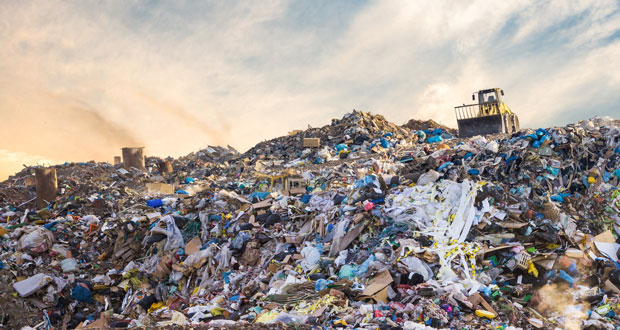 COP26 saw more than 100 countries pledge to significantly cut emissions of methane – a powerful greenhouse gas responsible for around 30 per cent of global warming to date. Dr Stephen Wise, Chief Strategic Development Officer for environmental biotechnology company, Advetec explains what this means for FMs
COP26 saw more than 100 countries pledge to significantly cut emissions of methane – a powerful greenhouse gas responsible for around 30 per cent of global warming to date. Dr Stephen Wise, Chief Strategic Development Officer for environmental biotechnology company, Advetec explains what this means for FMs
 The Global Methane Pledge commits signatories to reducing their overall emissions by 30 per cent by 2030, compared with 2020 levels.
The Global Methane Pledge commits signatories to reducing their overall emissions by 30 per cent by 2030, compared with 2020 levels.The new initiative emphasises making cuts by tackling emissions from sources including oil and gas wells, livestock farming and decaying waste in landfill sites. According to Dr Stephen Wise from environmental biotechnology company, Advetec, it’s the latter which provides FMs with an actionable opportunity to get ahead in minimising methane and meeting reduction targets.
Where does methane come from?
Methane is generated under anaerobic conditions. A simple way to visualise this is a cow. The cow takes in food and breaks it down within its stomach under anaerobic conditions. As the food breaks down in the stomach it generates methane which is expelled into the atmosphere. Methane is an issue as it is 80 times more potent that carbon dioxide as a greenhouse gas.
What’s waste got to do with it?
Landfill is inherently an anaerobic system. Waste goes into the ground, it’s covered by new waste the next day and very little air ingresses. This provides the perfect conditions for organic waste to breakdown and emit methane – just as a cow’s food does inside the stomach. There may be some gas collection infrastructure in place, but methane will always escape into the atmosphere as it’s a natural process.
Therefore, in order to reach the targets set out at COP26, we must address the fate of all waste, including the residual non-recyclable waste – or the forgotten waste. The Pledge, along with rising costs of landfill, waste segregation targets and the increasing value of the green pound, have created the right conditions to drive change and innovate the way they collect, treat and ultimately dispose of waste.
But you don’t send any waste to landfill?
You may think this to be the case as you have waste contracts in place, recycling bins aplenty and a widespread desire to reduce waste to landfill so it appears that all is in hand. But what many businesses don’t know is that despite these efforts, 50 per cent of waste still goes to landfill or for incineration.
This 50 per cent is made up of mixed residual waste – the waste that can’t be segregated or sorted for recycling because it is contaminated. This could be a half empty drinks bottle, a yoghurt pot or a sandwich wrapper with crusts in, for example. This portion often gets overlooked altogether but it’s the organic matter that produces methane under anaerobic conditions.
The first steps of reducing methane is to ensure that FMs and their organisations have a greater understanding of the waste supply chain as a whole so that they can take full accountability for every single decision made. It can be easy to rely on outsourced partners to do the green thinking but FMs need to understand their different waste streams, how they are handled, how they can be handled and how all of this fits within the wider waste journey. This knowledge will help FMs to query waste handlers’ choices, dictate desired waste outcomes and chart a course for continual improvement.
What changes can you make?
Reducing widespread use of landfill relies on there being other affordable, accessible alternative solutions and there have been great strides forward with improved practices and the use of innovative treatment technologies – including:
- Greater refocus on sorting and separating waste on site can yield green benefits. Sorting waste into three main streams – clean organic (food waste), residual (mixed waste) and segregated recyclates – at source helps FMs to better understand their waste and the disposal routes that are appropriate and available. This is far from innovative, but a surprising number of organisations still don’t do this. Moreover, FMs need to learn that if organic matter is present within the recyclates, they will not be recycled and are headed to landfill or incineration.
- Taking waste off site comes with an additional environmental cost as lorries generate carbon emissions, so there are real benefits to treating some waste streams on site. Biotechnology has come into its own here, particularly with residual waste, as this can’t be sent for recycling because it comprises an organic fraction. Biotechnology makes it possible to reduce the mass of this waste stream by typically 50 per cent on site – which means fewer collections and less road related carbon, as well as cost savings. Perhaps most significantly, it results in considerably less waste going to landfill or EfW.
- Another highly effective step is to send all separately collected food waste for anaerobic digestion – a process which can be used to create green energy – electricity, gas or fuel and considerable carbon savings. The circle is completed perfectly when organisations buy that green energy back.
The pressure for FMs to think greener is ever increasing and as long as sustainability remains at the top of the global agenda, it’s here to stay. From achieving net zero to cutting methane, it can seem overwhelming but by championing waste management at board level, educating business leaders about the waste journey and the technologies available and setting their own targets, FMs can quickly become ambassadors for positive change.
FMJ is hosting a webinar with Advetec on the 26th January 2022: How biotechnology is helping FMs achieve their sustainability goals and reduce waste. For more details visit: https://us02web.zoom.us/webinar/register/5616351723856/WN_I72h2PxfS3awLc0T6378YQ






